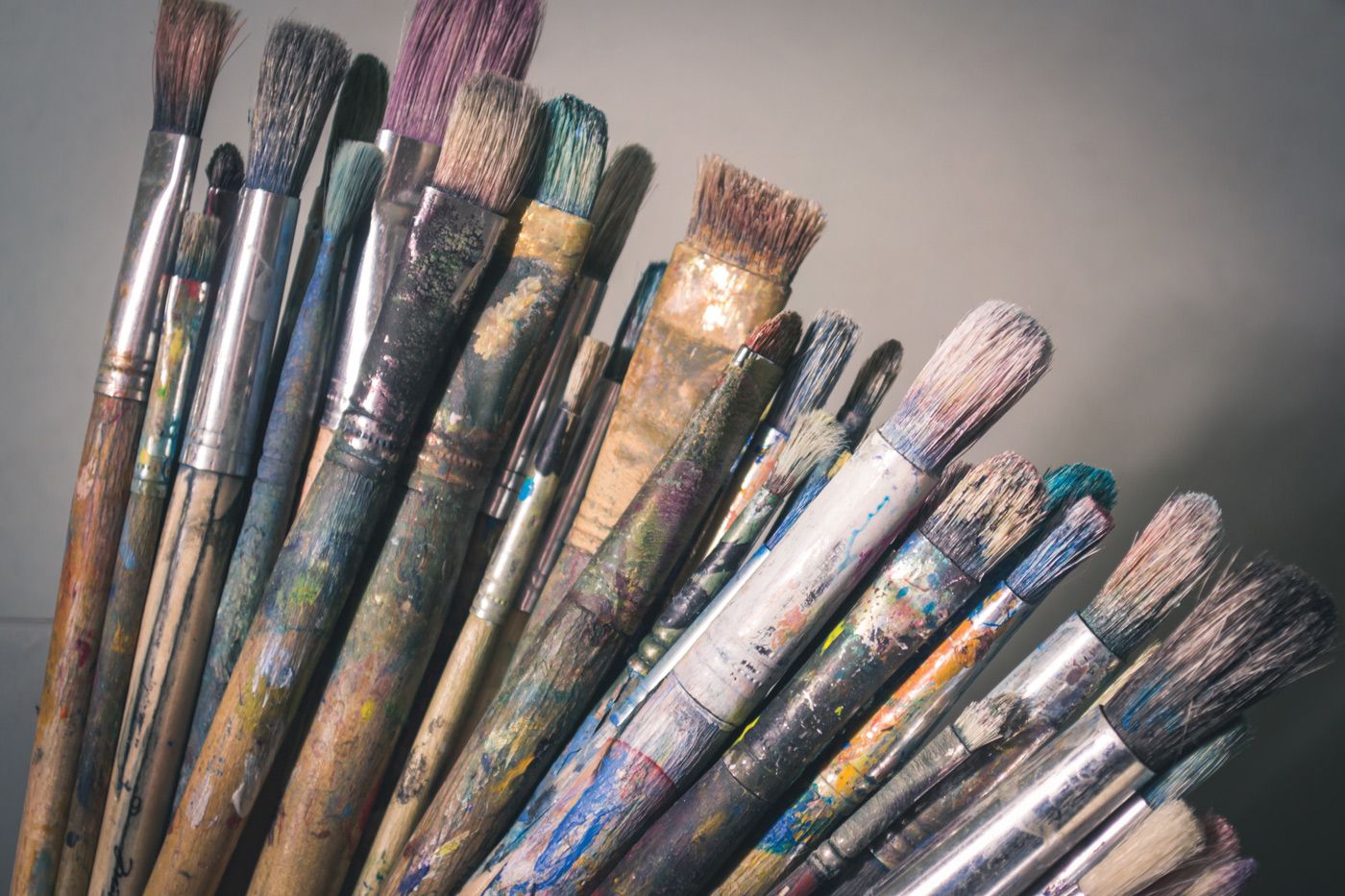
Why are brushes important? Brushes are essential tools for artists, painters, and even makeup enthusiasts. They come in various shapes, sizes, and materials, each designed for specific tasks. Brushes help in creating precise lines, blending colors, and adding texture to artworks or makeup looks. They can be made from natural or synthetic fibers, each offering unique benefits. Natural fibers are often softer and better for blending, while synthetic ones are more durable and easier to clean. Using the right brush can significantly impact the quality of your work, making it smoother and more professional. Whether you're painting a masterpiece or perfecting your makeup, the right brush can make all the difference.
Brushes in Art
Brushes have been essential tools for artists for centuries. They come in various shapes, sizes, and materials, each serving a unique purpose. Here are some fascinating facts about brushes in the world of art.
- The earliest known brushes date back to the Paleolithic era, made from animal hair and twigs.
- Sable hair brushes are considered the finest for watercolor painting due to their softness and ability to hold a fine point.
- Hog bristle brushes are popular for oil painting because they are durable and can hold a lot of paint.
- Synthetic brushes, made from nylon or polyester, are often used for acrylic painting as they are more resistant to the chemicals in acrylic paints.
- Fan brushes are used to create textures like grass or fur in paintings.
- Round brushes are versatile and can be used for detailed work or broad strokes, depending on the pressure applied.
- Flat brushes are ideal for bold strokes and filling in large areas with color.
- Filbert brushes have a rounded edge, making them perfect for blending and creating soft edges.
- Detail brushes, with their tiny tips, are used for intricate work and fine lines.
- Mop brushes, with their large, soft heads, are used for washes and blending large areas of color.
Brushes in Makeup
Makeup brushes are essential for achieving a flawless look. They come in various shapes and sizes, each designed for a specific purpose. Here are some interesting facts about makeup brushes.
- The first makeup brushes were made from animal hair, but synthetic brushes are now more common due to ethical concerns.
- Kabuki brushes, with their dense, rounded heads, are used for applying powder foundation and bronzer.
- Stippling brushes have two layers of bristles, allowing for a light, airbrushed finish.
- Angled brushes are perfect for applying blush or contouring the face.
- Fan brushes are used to apply highlighter or sweep away excess powder.
- Eyeshadow brushes come in various shapes, including flat, fluffy, and angled, each serving a different purpose.
- Lip brushes have a small, firm tip for precise application of lipstick or gloss.
- Spoolie brushes are used to groom eyebrows and blend brow products.
- Concealer brushes have a flat, tapered shape for applying and blending concealer.
- Foundation brushes come in various shapes, including flat, round, and angled, each providing a different finish.
Brushes in Cleaning
Cleaning brushes are essential tools for maintaining cleanliness in our homes and workplaces. They come in various shapes and sizes, each designed for a specific cleaning task. Here are some facts about cleaning brushes.
- The first cleaning brushes were made from natural materials like straw, twigs, and animal hair.
- Toothbrushes, used for cleaning teeth, were first invented in China around 1498.
- Bottle brushes have long, narrow heads designed to clean the inside of bottles and other narrow containers.
- Scrub brushes, with their stiff bristles, are used for heavy-duty cleaning tasks like scrubbing floors and removing tough stains.
- Dish brushes have soft bristles for cleaning dishes without scratching them.
- Toilet brushes are designed with a long handle and stiff bristles to clean the inside of toilets.
- Dusting brushes have soft, fluffy bristles for removing dust from delicate surfaces.
- Nail brushes, with their small, stiff bristles, are used to clean under fingernails and around cuticles.
The Final Strokes
Brushes have a rich history and a variety of uses that make them indispensable tools in our daily lives. From ancient times to modern days, they've evolved in design and function, catering to artists, cooks, cleaners, and more. Knowing the different types and their specific uses can help you choose the right one for your needs, whether you're painting a masterpiece or scrubbing a stubborn stain.
Understanding the materials and care tips ensures your brushes last longer and perform better. So next time you pick up a brush, remember the fascinating facts behind this simple yet essential tool. Whether it's for art, cleaning, or grooming, brushes play a crucial role in making our tasks easier and more efficient. Keep these facts in mind, and you'll appreciate the humble brush even more.
Was this page helpful?
Our commitment to delivering trustworthy and engaging content is at the heart of what we do. Each fact on our site is contributed by real users like you, bringing a wealth of diverse insights and information. To ensure the highest standards of accuracy and reliability, our dedicated editors meticulously review each submission. This process guarantees that the facts we share are not only fascinating but also credible. Trust in our commitment to quality and authenticity as you explore and learn with us.
